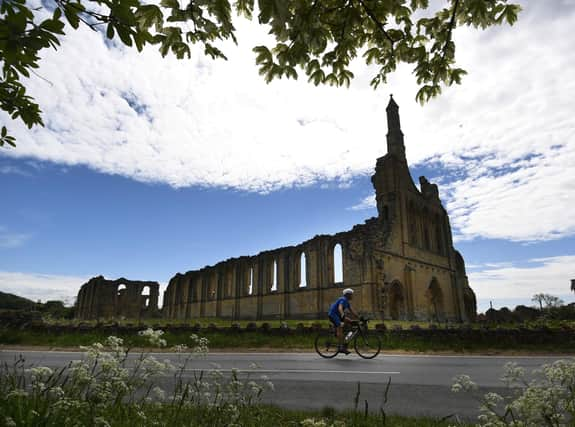Byland Abbey: The historic Yorkshire abbey hailed as being among Europe’s finest medieval churches


History records that in 1134 a waggon drawn by eight slow-paced oxen lumbered and creaked into Thirsk.
It carried an abbot and 12 monks, a party of wanderers who had been outcast from Furness Abbey on the west coast and were looking for somewhere to build a new monastery.
Advertisement
Hide AdAdvertisement
Hide AdThey had spent years moving from place to place, and eventually heard they might find a sympathetic ear in Gundreda de Gournay, whose son Roger de Mowbray held extensive lands in Yorkshire.
For the solitude they sought, Gundreda directed the wanderers to some marshland at the foot of the Hambledon Hills known as Old Byland. Thus came into being Byland Abbey, later described as one of the shining lights of northern monasticism.
By 1177 drainage and building work was almost complete, although completion of the large abbey church of St. Mary took another 15 years. It would be hailed as among Europe’s finest medieval churches.
Roger de Mowbray himself became an inmate of the monastery, and gave grants to build up the abbey’s economy through sheep farming and wool sales. Iron mines were also established at Bentley in today’s West Yorkshire.
Advertisement
Hide AdAdvertisement
Hide AdBut as with other northern abbeys, Byland was attacked by Scots invaders in the early 14th century after the English had been routed at the Battle of Bannockburn.
One story has it that when Robert the Bruce’s army swept down from the moors in 1322, King Edward II was in the middle of eating dinner at Byland Abbey and was spirited away to York by two monks.
Byland was closed down in 1538 following Henry VIII’s decision to close all monasteries. On 30th November that year the Abbot and 25 monks signed deeds of surrender and the abbey was gutted of all valuable items, buildings stripped of lead, glass and timber, and the estates granted to a local landowner, Sir William Pickering.
Today, Byland Abbey is cared for by English Heritage and the favourite monastic ruin of many. Much of interest survives, particularly on the north and west sides, and there are well-preserved mosaic tiles in the south transept.
Comment Guidelines
National World encourages reader discussion on our stories. User feedback, insights and back-and-forth exchanges add a rich layer of context to reporting. Please review our Community Guidelines before commenting.